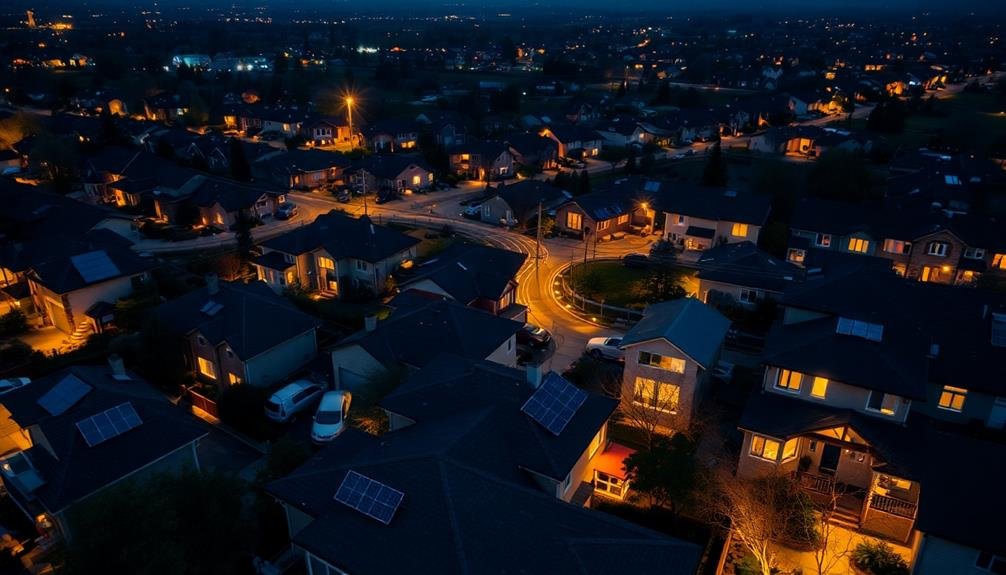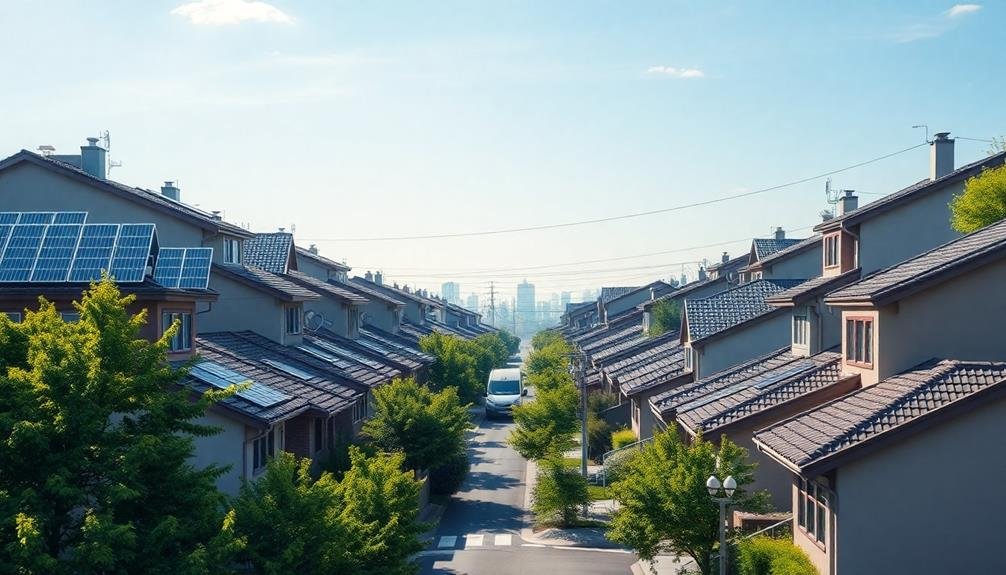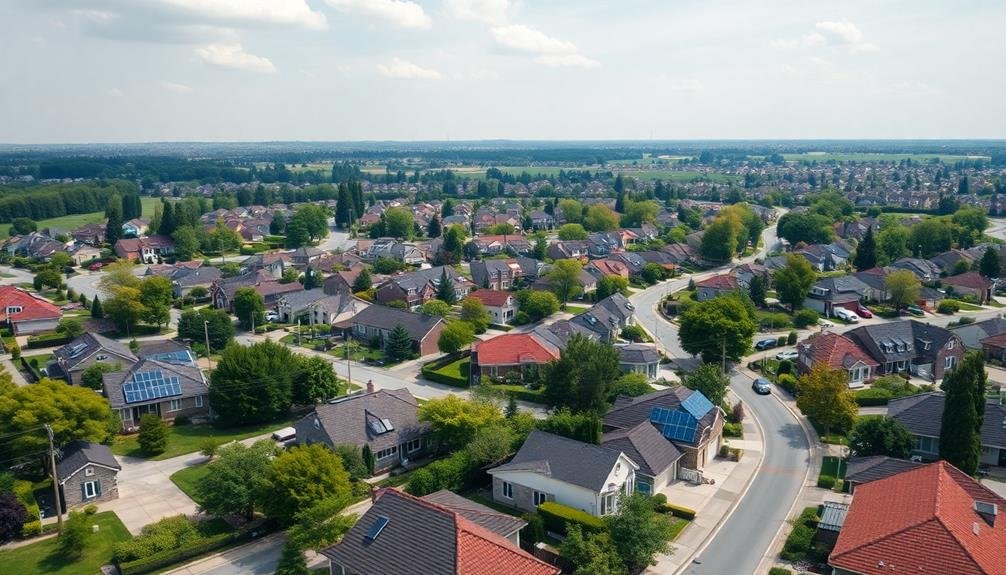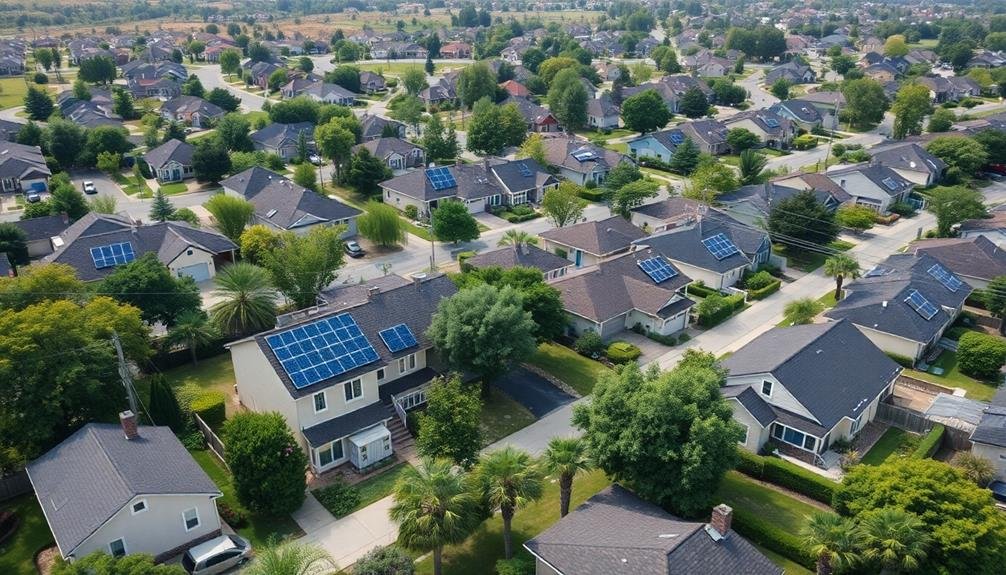Fuel cell microgrids can revolutionize your neighborhood's energy landscape with five key benefits. You'll enjoy enhanced energy independence, reducing reliance on the main grid. Your community will experience improved resilience, maintaining power during outages. You'll contribute to a cleaner environment through reduced carbon emissions. Your utility costs will likely decrease due to more efficient energy production and stable prices. Finally, your property values may increase as energy-independent homes become more desirable. These advantages offer a compelling case for embracing fuel cell microgrid technology in your neighborhood. Exploring each benefit in detail reveals even more exciting possibilities for your community's energy future.
Enhanced Energy Independence

Resilience is at the heart of enhanced energy independence offered by neighborhood fuel cell microgrids. You'll find that these systems provide a reliable source of power, reducing your reliance on the main grid. By generating electricity on-site, you're less vulnerable to widespread outages and can maintain essential services during emergencies.
Fuel cell microgrids operate continuously, unlike solar or wind systems that depend on weather conditions. This consistency guarantees you have a stable power supply year-round.
You'll also benefit from increased control over your energy costs, as you're less affected by fluctuating utility prices. These microgrids can integrate with renewable energy sources, creating a hybrid system that maximizes efficiency and sustainability.
You'll be contributing to a cleaner environment while securing your energy future. Moreover, you'll gain the ability to isolate your neighborhood from the main grid during disturbances, maintaining power when others might be in the dark.
This "islanding" capability enhances your community's resilience and self-sufficiency.
Improved Grid Resilience
Strength in numbers defines the improved grid resilience offered by neighborhood fuel cell microgrids. When you're part of a microgrid, you're no longer solely dependent on the main power grid. Instead, you're connected to a localized network that can operate independently if needed.
During blackouts or severe weather events, your microgrid can disconnect from the main grid and continue supplying power to your neighborhood. This "islanding" capability guarantees you'll have electricity even when surrounding areas don't. Fuel cells, being reliable and consistent power sources, play an essential role in maintaining this stability.
You'll also benefit from reduced power fluctuations and improved power quality. Fuel cells provide a steady stream of clean electricity, helping to smooth out voltage irregularities that can damage sensitive equipment.
Furthermore, the distributed nature of microgrids means there are multiple power generation points. If one fuel cell fails, others can compensate, reducing the risk of complete power loss.
Reduced Carbon Emissions

Beyond enhancing grid resilience, neighborhood fuel cell microgrids offer significant environmental benefits.
You'll see a substantial reduction in carbon emissions compared to traditional power sources. Fuel cells generate electricity through electrochemical reactions, not combustion, resulting in lower greenhouse gas emissions.
These microgrids often use natural gas or biogas as fuel, which produces fewer carbon emissions than coal or oil-based power plants. When using renewable biogas from waste treatment facilities or landfills, you're fundamentally creating a carbon-neutral energy source. This approach helps your community reduce its carbon footprint and contribute to climate change mitigation efforts.
You'll also benefit from improved air quality in your neighborhood. Fuel cells emit virtually no particulate matter, sulfur dioxide, or nitrogen oxides, which are common pollutants from traditional power plants.
This reduction in air pollution can lead to better health outcomes for you and your neighbors.
Lower Utility Costs
With neighborhood fuel cell microgrids, you'll likely see a decrease in your utility costs. These systems generate electricity more efficiently than traditional power plants, resulting in lower energy production costs. As a resident, you'll benefit from this efficiency through reduced electricity bills.
Additionally, fuel cell microgrids can operate independently from the main grid, protecting you from price spikes during peak demand periods.
Fuel cell microgrids offer several cost-saving advantages:
- Reduced transmission losses: Electricity is generated closer to where it's used, minimizing energy lost during long-distance transmission.
- Lower maintenance costs: Fuel cells have fewer moving parts than traditional generators, reducing maintenance expenses.
- Increased reliability: Fewer outages mean you won't need to replace spoiled food or invest in backup power solutions.
You'll also benefit from more stable energy prices. Fuel cell microgrids often use natural gas, which tends to have more consistent pricing than other energy sources. This stability helps protect you from sudden utility rate increases.
Moreover, as fuel cell technology continues to advance, you can expect even greater cost savings in the future as efficiency improves and production costs decrease.
Increased Property Values

The benefits of neighborhood fuel cell microgrids extend beyond your utility bills. When your community invests in this innovative technology, you'll likely see an increase in property values. Homes equipped with reliable, clean energy sources become more attractive to potential buyers, setting your property apart in the real estate market.
Fuel cell microgrids offer energy independence and resilience, features that savvy homebuyers increasingly value. You'll find that your property's desirability rises as it becomes part of a cutting-edge, eco-friendly neighborhood. This green infrastructure can lead to higher resale values and faster sales when you decide to move.
Moreover, as cities and towns prioritize sustainability, properties connected to microgrids may receive preferential treatment in zoning and development plans. This can lead to improved neighborhood amenities and services, further boosting your property's worth.
You'll also benefit from the long-term cost savings associated with fuel cell microgrids. As traditional energy prices fluctuate, your stable and efficient power source will become an increasingly valuable asset, reflected in your property's market value.
Ultimately, investing in a fuel cell microgrid for your neighborhood is an investment in your home's future worth.
Frequently Asked Questions
How Long Does It Take to Install a Neighborhood Fuel Cell Microgrid?
You'll find that installing a neighborhood fuel cell microgrid typically takes 6-12 months. The timeline depends on factors like community size, existing infrastructure, and regulatory approvals. It's a complex process, but it's worth the wait for energy independence.
What Maintenance Is Required for Fuel Cell Microgrids in Residential Areas?
You'll need to perform regular inspections, replace filters, and check fuel connections. You should also monitor system performance, clean components, and schedule annual maintenance. Don't forget to update software and replace worn parts as needed.
Are There Any Noise Concerns Associated With Fuel Cell Microgrid Systems?
You'll be pleased to know that fuel cell microgrid systems are incredibly quiet. They don't have moving parts like traditional generators, so they operate with minimal noise. You'll barely notice them running in your neighborhood.
Can Individual Homeowners Opt Out of Participating in the Neighborhood Microgrid?
You'll need to check your specific microgrid agreement. Generally, you can opt out, but it may impact your energy reliability and costs. Consider discussing concerns with the microgrid operators before making a decision.
How Do Fuel Cell Microgrids Impact Local Job Creation and Economic Development?
You'll see fuel cell microgrids create local jobs in installation, maintenance, and operations. They'll boost economic development by attracting businesses seeking reliable power. You can expect increased property values and potential revenue from energy exports too.
In Summary
You've now seen the impressive benefits of neighborhood fuel cell microgrids. They'll boost your energy independence, make your grid more resilient, and slash carbon emissions. You'll enjoy lower utility costs and potentially higher property values. By embracing this technology, you're not just improving your own energy situation, but contributing to a cleaner, more sustainable future for your community. It's time to contemplate how fuel cell microgrids can transform your neighborhood.





Leave a Reply